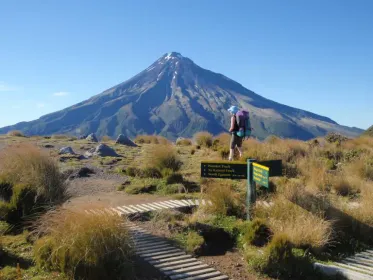 0 miles
0 miles
Visit Egmont National Park
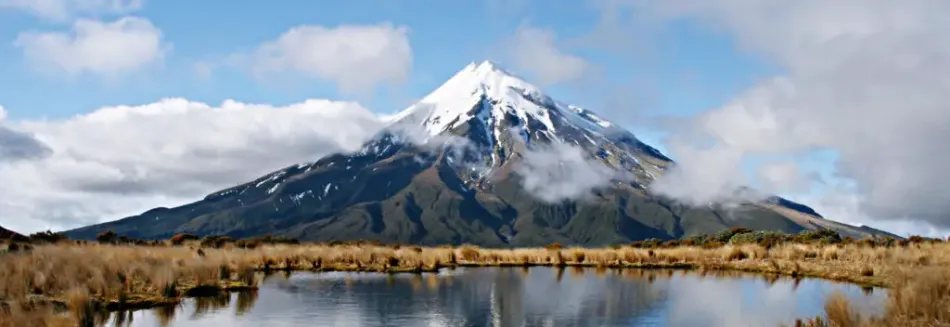
Egmont National Park encompasses the mighty Taranaki Maunga and offers lush waterfalls, rainforests, and mossy swamps. Geologically, Taranaki Maunga is New Zealand’s most perfectly formed volcano. It is around 120,000 years old and last erupted in 1775; the mountain is ‘dormant’ rather than extinct. At lower altitudes you’ll walk through tall rimu and kamahi trees; higher up the maunga, sub-alpine shrubs and herb fields are found above the snow line. Lush rainforests can be found on the slopes of the maunga, and are a result of the area’s high rainfall and mild coastal climate.
The walking track network in this national park is extensive, ranging from a 15-minute stroll along the Goblin Forest, named after the gnarled shape of the trees and the thick swathes of trailing moss, to the 3-day Pouākai Circuit. There’s a veritable maze of tracks around the Dawson Falls area, including the walk to Wilkies Pools, a series of eroded rock pools connected with gentle waterfalls and swimmable fresh-water pools. The snow-capped cone of Taranaki Maunga is beautifully symmetrical. Above the forest, you’ll find sub-alpine scrub and alpine herbs. A comprehensive network of walking tracks provides access to the unique beauty of the park. The Egmont National Park has 13 entrances, making it one of New Zealand’s most accessible wilderness areas. The ‘Around the Mountain Circuit’ takes 3 to 5 days to complete. The 2-3 day Pouākai Circuit, starting and finishing at North Egmont, crosses over the Ahukawakawa Swamp and the remnants of the old Pouākai volcano. A variety of short walks can be found around Dawson Falls and East Egmont. Don’t miss the Kamahi Loop walk, at East Egmont, through the Goblin Forest.
The main climbing route to the summit starts at North Egmont, and you need to allow 8 to 10 hours for the return trip. During winter, summit climbs are for experienced snow and ice climbers only. Climbers need a good knowledge of the mountain’s unique snow and ice conditions, a high level of experience, the right equipment and knowledge of how to use it. It is also recommended to check the weather forecast prior to the climb for any weather alerts and notify friends and family of your trip.
The ski field on the eastern slopes of Taranaki Maunga is operated by the Stratford Mountain Club, but visitors are always welcome. The season runs from June to October. The ski field is located 30 mins from the car park so be prepared to carry your gear or use the ‘flying fox’ system in place.
How do I get to Egmont National Park?
Hiking Tips
- The best time of the year to attempt the summit climb is January to April.
- Temperatures in the park can drop very rapidly and soft snow can turn into ice in a matter of minutes.
- When attempting the summit climb, be prepared for all weather eventualities and check the DoC website first for up-to-date weather conditions.
- Three sealed roads ascend the forested flanks of Taranaki Maunga – the roads lead to North Egmont, East Egmont and Dawson Falls.
- Summit climbers don’t need mountaineering experience, but they should be experienced and fit hikers.
- While the park has high rainfall, it also receives in excess of 2000 hours of sunshine a year.
- Short and long walks to enjoy
- Accommodation for booking around the National Park
Check out things to do nearby...
 0 miles
0 miles
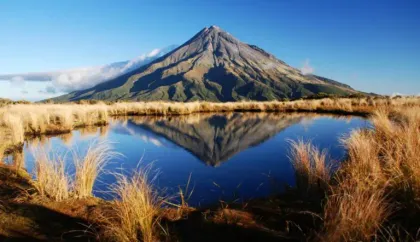 0 miles
0 miles
Climb Mount Taranaki, seen in The Last Samurai (2003), in Egmont National Park
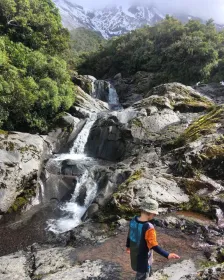 2 miles
2 miles
Beautiful Walking Trail through Wilkies Pools
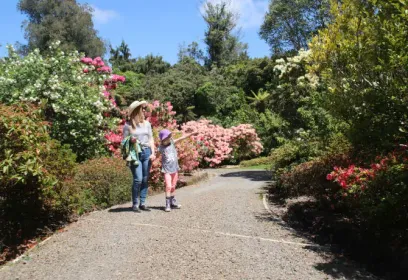 8 miles
8 miles
Explore the Magnificent Pukeiti Gardens
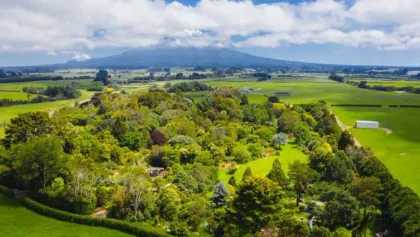 8 miles
8 miles
Visit Hollard Gardens in Taranaki
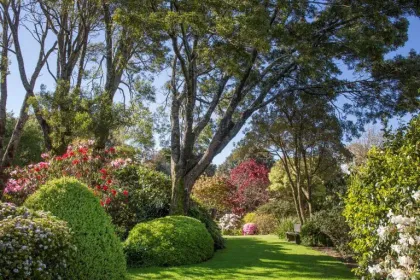 8 miles
8 miles
Visit Hollard Gardens in Taranaki
 9 miles
9 miles
Visit Poukai Zoo near New Plymouth
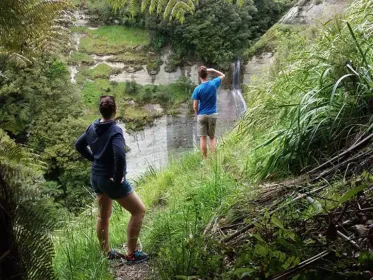 11 miles
11 miles
Tramping Trips with Eastern Taranaki Experience
 12 miles
12 miles
High Octane Action at Stratford Speedway
 12 miles
12 miles
Discover the Percy Thomson Gallery in Stratford
 12 miles
12 miles
Discover the Fun Ho! Toys Museum in Taranaki
 13 miles
13 miles